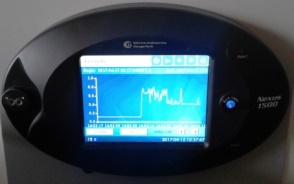
Current situation: Energy disaggregation is a set of technologies for determining the operating modes of a group of electrical appliances by high-frequency (≥ 30 kHz) vector measurements or measurements of current and voltage oscillograms at a single point in the network (smartmeter). Potentially, these technologies make it possible to substantially reduce the cost of commercial electricity metering systems, energy audit and energy saving projects by reducing the cost of measuring and communication equipment and commissioning works. Modern methods of detecting operation modes of individual electrical devices are based on the intellectual analysis of time series data and current and voltage spectrum dynamics. Information on switching the electric device on and off, changing its operation mode is mainly derived from the dynamics of active and reactive load, as well as high-frequency noises induced by the electric devices.

Project objectives: Development of effective energy disaggregation algorithms with reduced requirements for the quality of raw data and their computational intensity.
Approaches: One of the promising approaches is based on the use of deep artificial neural networks (deep learning): computationally expensive algorithms of neural network training are applied only to the unrecognized component of consumption of each meter are performed in the cloud service, while at the level of individual meters computationally undemanding algorithms of recognition are used. Storage of signatures of permanently operating devices helps to disaggregate their consumption.
Research methods:
(a) Smart metering technologies for the collection, storage and transmission of information on the electricity consumption of a group of instruments
(b) data mining, including deep learning artificial neural networks
Research object: energy consumption of a group of household appliances.
Potential customer: manufacturers of commercial electricity metering systems, dispatching control systems.
Prospects: The developed methods can be used for identification of events in the network, which are not related to the change of modes of operation of individual appliances, but are important for the dispatcher control of the distribution network: for detection and localization of failures, changes in the topology of the network as a result of relay operation. A key feature of the approach is the use of limited measurements at minimum cost for additional electrical equipment and communication system).